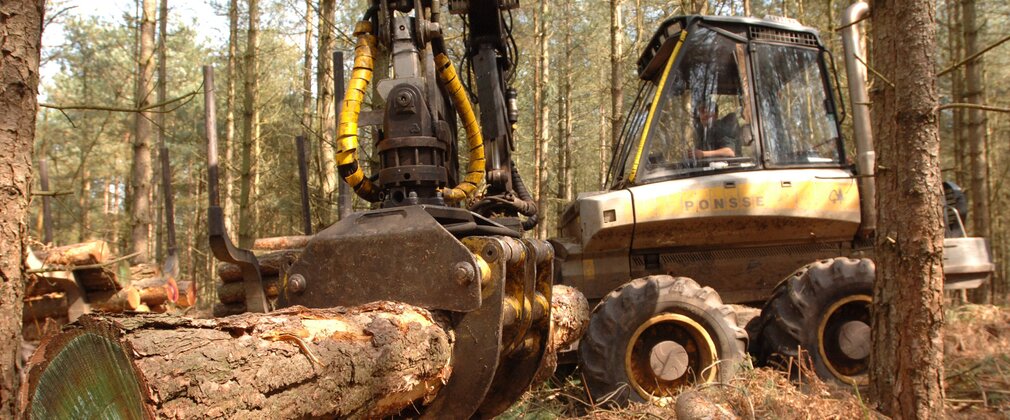Forestry operations at Eggesford Forest
Eggesford Forest is a working woodland producing sustainable timber. We are working here throughout 2025. This page provides more information about the work we're doing.
What is happening?
Across the Hilltown and Southcott areas of Eggesford, the maturing trees are growing closely together. We are thinning across the woodland, which means removing selected trees gives the remaining ones more space to grow to their full potential. Thinning also allows more light to reach the forest floor, which improves the habitat for ground flora and the wildlife it supports. These changes improve the biodiversity of the forest which support its resilience against pests, diseases, and our changing climate.
Can I still visit Eggesford Forest?
The forest is open to visitors throughout the forestry work but there will be times when we need to close or divert the unofficial tracks in the forest so we can work safely nearby. We recommend checking this web page for the latest updates before travelling. When all work is finished, we will be back to repair the forest roads and walking trails.
It is essential for the safety of our visitors, staff, contractors, and volunteers that everyone follows all signs, diversions, and closures at all times, whether or not you can see or hear us working. Forestry work is very hazardous. A falling tree can weigh several tonnes and hit the ground at nearly 60mph. If a harvesting machine chainsaw snaps, it can fly through the forest like a bullet.
What about the wildlife?
Harvesting trees is an important part of sustainable forest management and well managed forests support more wildlife. Before we start any forestry work, we carry out thorough ecological surveys to check for species such as birds, mammals, rodents, invertebrates, flora, and fungi. This enables us to identify ecological constraints such as the presence of European Protected Species and Schedule 1 protected birds, which affect the time of year when certain operations can be carried out.
We consider our findings against complex factors including tree health, how the ground slopes, soil condition, and likely rainfall when planning forestry work. While working, we continue to check for wildlife and adapt, pause, or suspend work if necessary.
While working in Hilltown, we are also improving the riparian (waterside) habitat in the forest by moving the treeline back from the water’s edge. By allowing more light through but retaining dappled shade, we hope to improve this habitat for a variety of wildlife.
Where can I find out more?
You can read about our management plans for Eggesford Forest in our forest plan.

